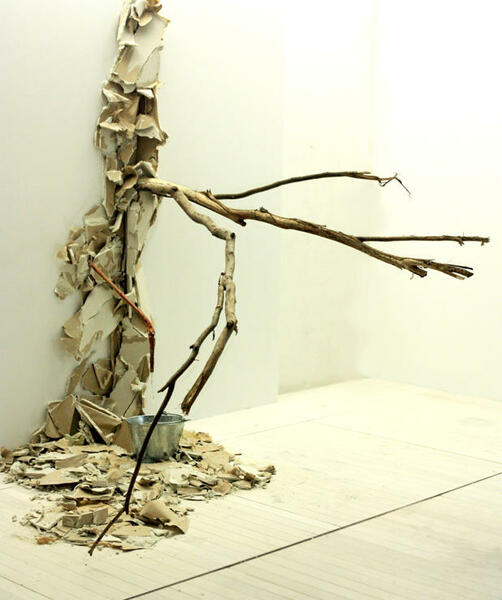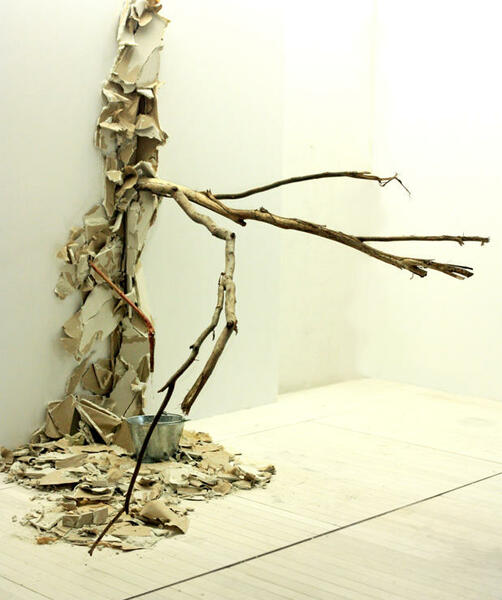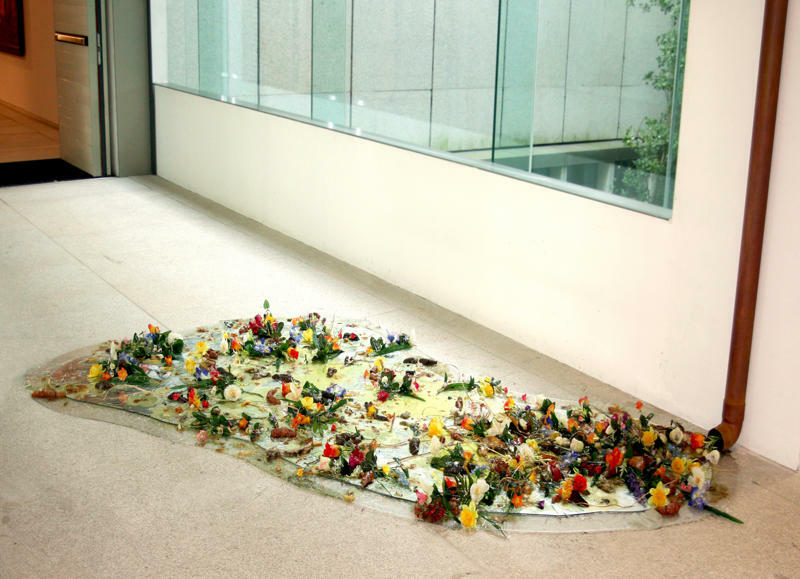Presence of Central American and Caribbean artists in the XXXI Biennial in Pontevedra.
In an article by David Barro published by El Mundo, about the XXXI Biennial in Pontevedra which is made up of many locations (Pontevedra, Vigo y Vilagarcía), until September 12th Santiago Olmo, who has “worked hard to show a Caribbean that is far from topics, and that is modern, compromised and able to go further than the popular religious afro-caribbean carácter”, will be the curator.

In the same way, the review emphasizes the fact that the Biennial distances itself from the stellar protagonism in order to get the artistic production of the Central American and Caribbean regions into a contextual relationship. Under the subtitle Utrópicos, related to “fragments of an utopian projection that is unique of these communities”, the curatorial perspective has centered itself in reflection, anthropological and histographical knowledge, and in the cultural dialog between contexts of a certain affinity.
“We have procured- states Barro- for these reasons, a place for thought; not as Sharp and literal as the expositive abyss, proposed for the Biennial in São Paulo 2008, but surely just as effective as this one to rethink the velocity and meaning of these gatherings with a less extravagant and speculative future.”
In his text, he highlights the Stone mural by Priscilla Monge that alludes to a biblical phrase: “if no one speaks, then stones will speak”, and is integrated in the exposition El aguacero, la siesta, el cañaveral, el tabaco. This collective exposition, notes the autor of the review, “anailzed the political, economic, and social context, as well as the post-colonial speeches by thinkers such Césaire o Glissant” through the work of diverse artists. Amongst these, the Panamanian-American Donna Conlon, who “uses irony with the battle against the yellow fever during the construction of the Panama Canal in an interesting sensorial installation”; the Cuban ex carpinter, Alexandre Arrechea, who alludes to “the failure of control and power”; or the Costa Rican Cinthya Soto “who presents pictographs of the spatial relation between the inhabited and the imaginaty landscape”. In the same way, Barro highlights works by Florencio Gelabert, Walterio Iraheta, Carlos Garaicoa, Toirac & Meira, Ernesto Salmerón and Moisés Barrios.
Another aspect that stands out is the interest of the biennial in “creating a web that is histo-artistic between the Latin American countries and Galicia through exiled artists like José Suárez, Laxeiro, Arturo Souto, Castelao, Maruja Mallo or Eugenio Granell”. Besides, they mention the “Rolando Castellon’s mural proposal, an unfolded book by Carlos Capelán, the indigenous faces of Luis González Palma, the tropical surrealism of Wilfredo Lam or the Afro-Cuban symbolism of José Bedia”.
On the other hand, they give relevance to “the creation of a center of documentation that is connected to the exposition Tras-Misiones, the result of a mix of literature, music, video or film, which serces as an integrating factor, educational and relaxing”.
Other sections of the Biennial commented on by Barro are: Fricciones, with interventions of the archeological wings of the Museum of Pontevedra through the Colombian artista Nadín Ospina and the Galitian Olmo Blanco; Migraciones-Mirando al Sur, “with interesting works by Adán Vallecillo, Ángel Poyón, Betsabé Romero, Miguel Ángel Madrigal, Regina Galindo and Ronald Morán”; and Archivacción, where the history of Central American performances is re-created.





